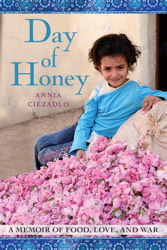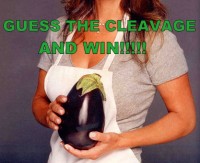1. Take your shoes off.
Aside from appealing to my sense of hygiene and aesthetics, the no-shoes thing is great as a traveler. Padding around on the cool stone floor of a museum in bare feet is lovely. And when a class of schoolchildren swarms in, they’re all soft and shuffling instead of crashing and stampeding like elephants.
And if you happen to stay in the nicest hotel in Phetchaburi, because it’s the only place that has a room, but it’s not like it’s actually a super-nice hotel, and that room has wall-to-wall carpeting—well, it’s nice to know that a significantly smaller number of people has walked on that carpeting in shoes, when compared with an American hotel of the same vintage.
And shoes-off culture supports excellent footwear. As someone who currently owns three pairs of Worishofers, I am thrilled by Thailand’s slip-on shoe scene. I apologize from the bottom of my heart for never starting that photo essay of all the ridiculous shoes I spotted in Bangkok. But I could never take the photos because I felt like I’d been gawking too obviously to then whip out my camera.
First in the photo essay would’ve been these spongy, Crocs-like things shaped like big, bulgy cartoon animal feet, complete with little claws. They came in pink and orange and blue and yellow, and I saw otherwise perfectly normal-looking people strolling around in them. One woman was all suited up in a gray pencil skirt and a white button-front blouse…and these bright-pink shoes. And not even in an ’80s-Working-Girl-high-powered-commuter way.
2. Kids are quiet.
Speaking of schoolchildren: They’re so good in Thailand. And they look cute in their uniforms. And their matching haircuts. Draconian? Nah—if those matching haircuts are contributing to their good behavior, I’m all for them.
3. Colors are fabulous.
Speaking of bright-pink shoes. And taxis the color of Barbie’s dream house, or an iridescent green beetle, or a turquoise sky. And monks in safety-orange robes (“saffron” is a euphemism).
Granted, it’s not color like Mexico has color. Everything’s a bit more muted. But it’s also much more broadly applied and non-gender-specific. The king dresses his dogs in little pink coats. And as you saw above, schoolkids wear lavender uniforms.
4. Conflict is avoided.
It’s a stereotype of Buddhist culture, but keeping your cool is valued in Thailand. Yelling is rude, as is pushing or shoving.
You never see people shouting at each other in the street, or someone having a one-way fight on a cell phone. I didn’t realize how relaxing this was until I was away from the hair-trigger freak-out zone that is New York City.
The no-conflict ideal trickles into the physical realm as well. If you stop in the middle of the sidewalk to snap a photo of some obscene-looking mannequins…
…no one jostles you, or curses you under their breath, or shouts, “Hey lady, getthafugouttathaway!” They just flow around you, barely breaking stride.
And taxis never honk. In a taxi one night, someone passed us too close, and our driver had to swerve out of the way. He briefly slowed down, but just kept driving. No horn, no fist-shaking. After about 10 more feet, he reached out the window and flipped his mirror back into place.
Plus, you’d never see a sign like this in the US:
5. OK, and: THE FOOD!
This is all I raved about after the last trip, so I was trying not to fall into that pit of oh-my-god-then-I-ate-that-and-that-and-that again. BUT. MY GOD. These people are insane. Everyone is eating at all times, no lie.
My analysis of Thai culture came largely from reading the Bangkok Post at breakfast every morning, then cherry-picking the quotes that seemed to illustrate my preconceptions. An academic I am not.
But how can you not extrapolate a whole wonderful worldview out of a news story about some white-collar criminal who is required to turn himself into the police but gets waylaid, and then produces the excuse “I was on my way to the police station, but I got hungry, so I stopped at the mall.”
Then we were in the Jim Thompson House museum, reading news clips from the 1950s, when the World Bank imposed austerity measures. (No one imposes austerity measures anymore. Did we just decide they don’t work? Or did we forget about them?) Women were asked to refrain from wearing makeup and stockings. Men shouldn’t go out drinking. And everyone was asked to eat only three meals a day, maximum. Please. If they could. That would be great, thanks.
So, Thailand, I love it and all its crazy eating and dressing and sweetness and shyness…but.
(to be continued…)






 So,
So,  And just as porn fashion has inspired boob jobs and merciless muff waxing, food porn has given every would-be cook the idea that what they make has to be artfully plated and garnished with edible flowers.
And just as porn fashion has inspired boob jobs and merciless muff waxing, food porn has given every would-be cook the idea that what they make has to be artfully plated and garnished with edible flowers.